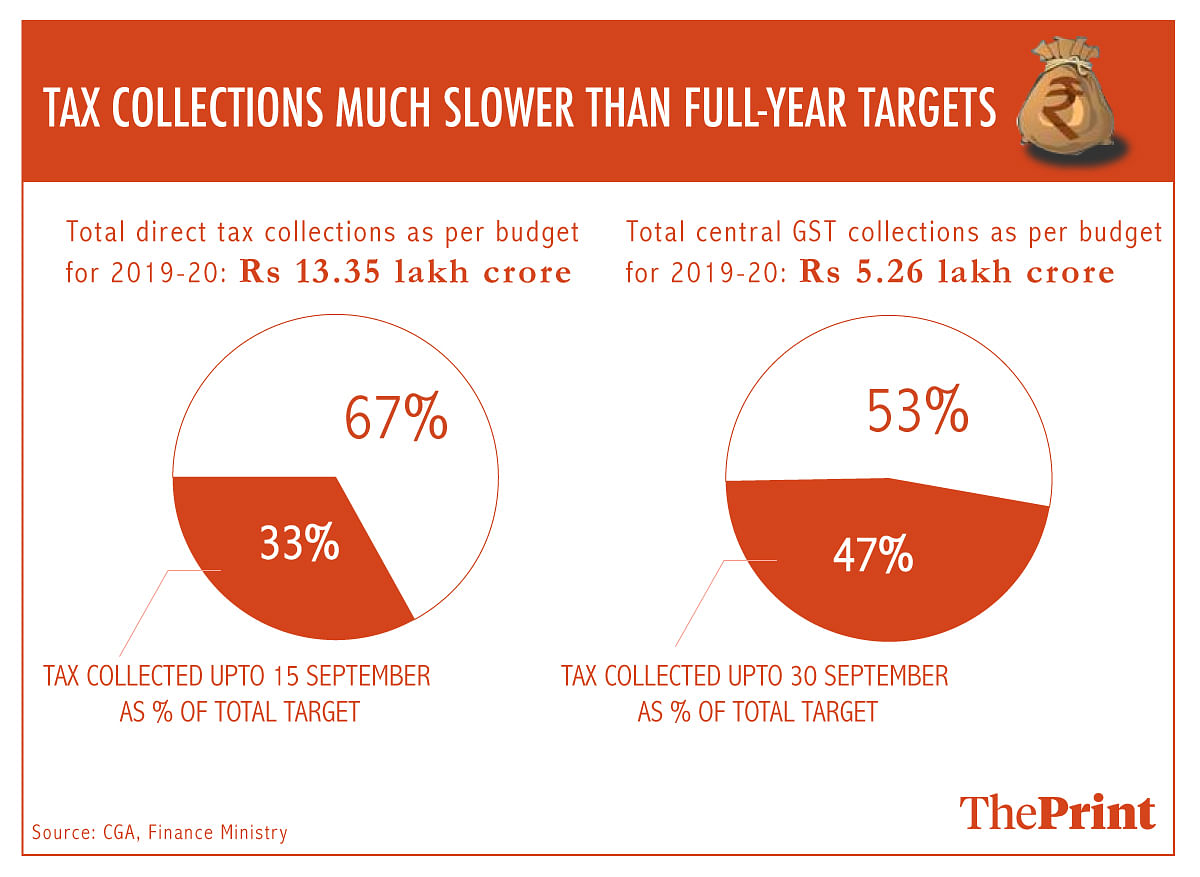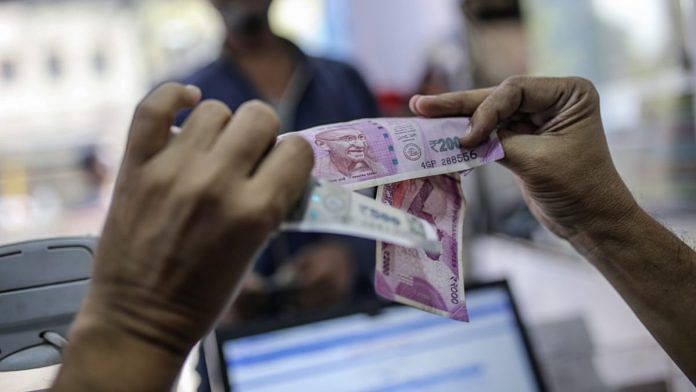New Delhi: Tax collection in India — both direct and indirect — is growing at a slow pace, much below what had been budgeted for 2019-20, forcing the government to look for ways to shore up revenue.
The finance ministry has announced the setting-up of a committee to look into ways to increase revenue and plug loopholes in GST collections. The committee has also been tasked with making changes to tax laws, expanding the tax base and improving compliance monitoring.
While direct tax collections are growing at around 5 per cent against a budgeted 17 per cent growth, GST collections have been increasing at about 12 per cent against a budgeted 15 per cent growth. What is worrisome about indirect taxes is that total GST collections have shrunk for the first time in September 2019 as compared to the same period a year ago, despite the absence of any rate cuts.
The sharp deceleration in tax collection is indicative of the economic slowdown reflecting on corporate profits and sales of goods and services. Indian economic growth had slowed to a six-year low of 5 per cent in the quarter ending June, and is expected to grow at only around 6.1 per cent in the whole 2019-20 financial year.
Also, the slowdown in tax collection growth has taken place despite the Rs 1.45 lakh crore tax-hit which the government revenue will take on account of the sharp reduction in corporate tax rates, announced last month.

Also read: The disruptive reform that’s responsible for India’s consumption slowdown
Gloomy numbers
Data with the Controller General of Accounts shows that direct tax collections in the April-August period were only 21 per cent of the total budgeted tax collections for the year, at Rs 2.76 lakh crore. The advance tax collections that came in on 15 September have also not helped. Direct tax collections, at Rs 4.4 lakh crore on 15 September, have only hit 33 per cent of the budgeted targets.
The central GST revenue is also not keeping pace with collections, at around Rs 2.5 lakh crore in the first six months of the year. This is far below 50 per cent of the budgeted target of Rs 5.26 lakh crore.
The slowdown effect
Experts have said that the economy is in a serious downturn and adversely impacting growth. Devendra Pant, chief economist at India Ratings and Research, said the extent of shortfall in tax collections will depend on growth recovery in the second half of this fiscal.
“The second half of the fiscal is expected to witness better growth and it could push up collections. But there could be a shortfall of around Rs 1.5 lakh crore in tax revenues,” he said, adding that the government will be helped by some expenditure compression in its fiscal deficit calculations.
The government is targeting a fiscal deficit of 3.3 per cent of the GDP in 2019-20, but this looks increasingly difficult in the face of the current slowdown.
“Two years since GST’s implementation, the tax regime has not stabilised and adversely impacted collections,” said Lekha Chakraborty, professor at the National Institute of Public Finance and Policy.
“There is a need to address the multiplicity of rates under GST and bring in a two or three-rate structure. There is also a need for ease in the filing of returns.”
Also read: Modi’s new govt plans to cut income tax rates, widen tax base






